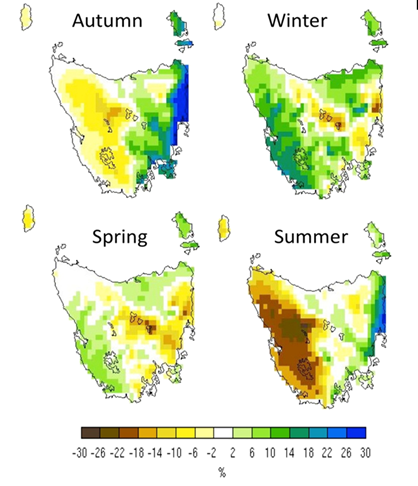Climate forecasts come from very complex climate modelling conducted by Tasmanian scientists from the ‘Climate Futures for Tasmania’ program. This program is run by respected scientists from the University of Tasmania and Australia’s national science agency, CSIRO.
The Tasmanian climate modelling was done using various projected greenhouse gas emission profiles from the work of the Intergovernmental Panel on Climate Change (IPCC), which is the global scientific authority on climate change.
The climate expected for the Clarence municipality to 2100 will be warmer.

The predicted increase in average temperature varies from 1.3 to 3.3 degrees celsius by 2100. This depends on whether emissions continue to rise under the ‘business as usual’ scenario, or if the emissions profile is lower because serious action is taken to reduce greenhouse gas emissions from human sources.
More rain will fall less often and will be concentrated so rivers, drains and gutters will fill quickly and overflow. When it rains, it will pour.
Extreme flooding will occur more frequently.

More storms and wilder storms will create big waves to lash the coast.
There will be more extremes of hot and cold, with more summer days, longer warm spells and more frequent heat waves.

There will be less days with frost.
Growing conditions for some crops will improve, and for others growing conditions will decline. In Tasmania, there will be more grapes and more wine!
The maps below show how rainfall patterns are likely to change by 2100. In autumn it will be wetter on the east coast. Winter and spring are become drier at high elevations. In summer, intense drying on the west coast is likely while it will be wetter on the east coast.

(Reference: Antarctic Climate and Ecosystems Cooperative Research Centre)

